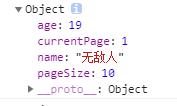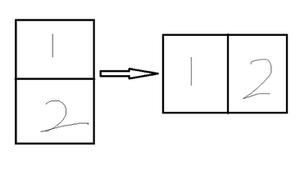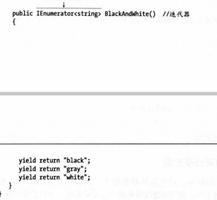将多个属性合并为一个属性-合并属性
在控件上,我正在使用多个属性属性:
[Browsable(false)][Bindable(false)]
[EditorBrowsable(EditorBrowsableState.Never)]
[DesignerSerializationVisibility(DesignerSerializationVisibility.Hidden)]
[Obsolete("", true)]
public new Boolean AllowDrop;
我也在许多其他控件属性上使用这些属性。
我想知道是否有一种方法可以减少每次编写的代码量。
如果可以像这样组合多个属性,那就太好了:
[Hidden(true)]public new Boolean AllowDrop;
该Hidden属性将包括以上所有属性。因此,只有1行代码。
也许还有一种方法可以将属性组合到宏之类的东西中?
我知道还有其他隐藏属性的方法,但是我选择了使用属性的方法。
谢谢
回答:
这取决于使用该属性的框架。
组合属性对于使用和解释属性的上下文可能是有意义的。例如,对于那些使用.Net类型描述机制的上下文,您可以自定义.Net返回给使用者的类型描述。
为此,可以使用标准.Net机制为类型提供自定义元数据,并为对象注册自定义类型描述符。
通过为您的类型创建自定义类型描述符,该想法将以这种方式起作用。在自定义类型描述符中,您将为类型的属性返回自定义属性描述符,在属性描述符中,将为属性返回一组自定义属性。
该方法需要更多代码,但它确实很有趣,并且共享了一些有关如何为您的类型提供自定义元数据的好主意:
该用法提供了创建MetaDataAttributes的标准方法。实现此接口的每个属性都将用作元数据,并且将使用它在Process方法中返回的那些属性代替该属性:
public interface IMetadatAttribute{
Attribute[] Process();
}
这是一个示例元数据属性,在处理属性时会返回一些属性:
public class MySampleMetadataAttribute : Attribute, IMetadatAttribute{
public Attribute[] Process()
{
var attributes = new Attribute[]{
new BrowsableAttribute(false),
new EditorBrowsableAttribute(EditorBrowsableState.Never),
new BindableAttribute(false),
new DesignerSerializationVisibilityAttribute(
DesignerSerializationVisibility.Hidden),
new ObsoleteAttribute("", true)
};
return attributes;
}
}
此类将由自定义类型描述符使用,以提供该属性的自定义属性列表:
public class MyPropertyDescriptor : PropertyDescriptor{
PropertyDescriptor original;
public MyPropertyDescriptor(PropertyDescriptor originalProperty)
: base(originalProperty) { original = originalProperty;}
public override AttributeCollection Attributes
{
get
{
var attributes = base.Attributes.Cast<Attribute>();
var result = new List<Attribute>();
foreach (var item in attributes)
{
if(item is IMetadatAttribute)
{
var attrs = ((IMetadatAttribute)item).Process();
if(attrs !=null )
{
foreach (var a in attrs)
result.Add(a);
}
}
else
result.Add(item);
}
return new AttributeCollection(result.ToArray());
}
}
// Implement other properties and methods simply using return original
// The implementation is trivial like this one:
// public override Type ComponentType
// {
// get { return original.ComponentType; }
// }
}
这是类型描述符,为您的类型提供自定义描述。在此示例中,它使用自定义属性描述符为类的属性提供自定义属性集:
public class MyTypeDescriptor : CustomTypeDescriptor{
ICustomTypeDescriptor original;
public MyTypeDescriptor(ICustomTypeDescriptor originalDescriptor)
: base(originalDescriptor)
{
original = originalDescriptor;
}
public override PropertyDescriptorCollection GetProperties()
{
return this.GetProperties(new Attribute[] { });
}
public override PropertyDescriptorCollection GetProperties(Attribute[] attributes)
{
var properties = base.GetProperties(attributes).Cast<PropertyDescriptor>()
.Select(p => new MyPropertyDescriptor(p))
.ToArray();
return new PropertyDescriptorCollection(properties);
}
}
此类将在您的类型上方的属性中使用,以介绍我们创建的自定义类型描述符,作为该类型的元数据引擎:
public class MyTypeDescriptionProvider : TypeDescriptionProvider{
public MyTypeDescriptionProvider()
: base(TypeDescriptor.GetProvider(typeof(object))) { }
public override ICustomTypeDescriptor GetTypeDescriptor(Type objectType,
object instance)
{
ICustomTypeDescriptor baseDescriptor = base.GetTypeDescriptor(objectType, instance);
return new MyTypeDescriptor(baseDescriptor);
}
}
这是我的示例类,其Name属性使用其修饰,MySampleMetadataAttribute并且该类本身已注册为使用我们的自定义类型描述符提供程序:
[TypeDescriptionProvider(typeof(MyTypeDescriptionProvider))]public class MySampleClass
{
public int Id { get; set; }
[MySampleMetadataAttribue]
[DisplayName("My Name")]
public string Name { get; set; }
}
要查看结果,足以创建该类的实例并在中查看结果PropertyGrid:
var o = new MySampleClass();this.propertyGrid1.SelectedObject = o;
- 可能它不像您期望的那样简单。但它正在工作。
- 这是一个冗长的答案,但包含一个完整的工作示例,说明如何将类型描述符应用于类型以提供自定义元数据。
- 该方法不适用于使用反射而不是类型描述的引擎。但是它完全可以与例如
PropertyGrid与类型描述一起使用的控件一起使用。
以上是 将多个属性合并为一个属性-合并属性 的全部内容, 来源链接: utcz.com/qa/416623.html







